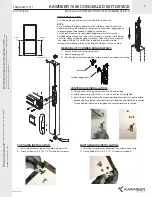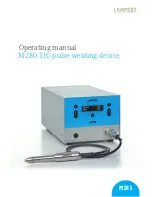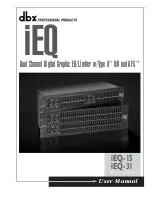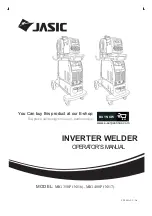
G E N E R A L I N F O R M A T I O N
page 1 – 4
WheatNet-IP
/ Aug 2011
is roughly 1/2 millisecond, which is well below the 5-10 millisecond human threshold
of detection. Unfortunately, due to the none-real time nature of the Windows operating
system and the fact that Windows requires buffers for audio streams, latency to/from a
Windows PC remains on the order of 100 milliseconds.
Rack Mounting
The WheatNet-IP is designed to fit into an industry standard 19" equipment rack, and
requires one rack unit (1.75 inches) of vertical space. Every BLADE model has a depth
of 13-1/4" behind the rack rails (including chassis connectors), with the exception of
the MADI BLADE with a 13-3/4" depth and LIO-48 BLADE with a 9-1/2" depth. An
additional five inches of space is required for wiring cables to pass through. The chassis of
all BLADE models has a width of 17-3/8". Space needed in front of rack rails is 3/4"for all
BLADE models. The WheatNet-IP does not have top or bottom cover vent holes. Latent
heat is vented out of the enclosure by natural convection through slots in the top of the
rear panel. Cooler air is drawn into the unit through vertical slots positioned lower in the
side panels. There is no fan inside the WheatNet-IP because its power consumption is
low enough to not require one.
The WheatNet-IP may be mounted between other devices in the equipment rack and
in accordance with good engineering practice should not be mounted directly above
devices that generate significant amounts of heat. If such a location is unavoidable then it
is advisable to utilize an extra 1RU blank rack panel between the WheatNet-IP and devices
immediately above and/or below it. WheatNet-IP
88a analog BLADEs in particular run
hotter and should be installed with spaces in between to avoid detrimental heat build up.
WARNING! Under no circumstances should the WheatNet-IP unit be opened!
The unit contains high voltage circuits that are hazardous and potentially harmful.
The unit has no user-serviceable parts inside! If you have a problem the unit must
be returned to Wheatstone Corporation for repair.
Installation Tips
• Place any surge protection circuits as close as possible to the WheatNet-IP or other
device being protected.
• Establish a low impedance common ground in your facility and try to route all
grounds to that point.
• Choose the best power conditioning / UPS units that you can afford and suitable
for your equipment – focus on the features and options you need. The better UPS
products can prevent thousands of dollars in equipment damage — some even come
with an external equipment damage warranty.
•
Unbalanced audio connections to the WheatNet-IP should be made with shielded two
conductor cable such as Belden 8451 or 9451 as if connecting a balanced source. At
the unbalanced source’s output connect the + Output to the HI input wire and connect
the source GND wire to the LO wire. Connect the shield at the WheatNet-IP end only.
• For digital audio connections always use a good quality digital audio cable with a
characteristic impedance of 110 ohms.
The AES/EBU specification, with its broad impedance tolerance, allows for cables with impedances
from 88 ohms to 132 ohms – 110 ohms is ideal. Twisted pair cable should be shielded, and in the
case of multi-pair cable, each pair should be individually shielded. Foil shielding is recommended for
permanent installations and foil shield plus overall braid should be used in applications where frequent
flexing of the cable will occur. One cable pair is capable of carrying two channels of digital audio.
WheatNet-IP
/ Aug 2012
WheatNet-IP
/ Mar 2013
WheatNet-IP
/ May 2013
WheatNet-IP
/ Mar 2014
Содержание WheatNet-IP Blade3s
Страница 2: ...TECHNICAL MANUAL Wheatstone Corporation April 2009 AUDIO OVER IP NETWORK WheatNet IP ...
Страница 13: ...Quick Start 7 WheatNet IP Apr 2009 Figure 4 ...
Страница 224: ...A P P E N D I C E S page A 34 WheatNet IP Apr 2009 Appendix 5 Contents External Controllers A 35 ...
Страница 238: ...page A 48 WheatNet IP Mar 2014 A P P E N D I C E S Click Next Click Install ...
















































